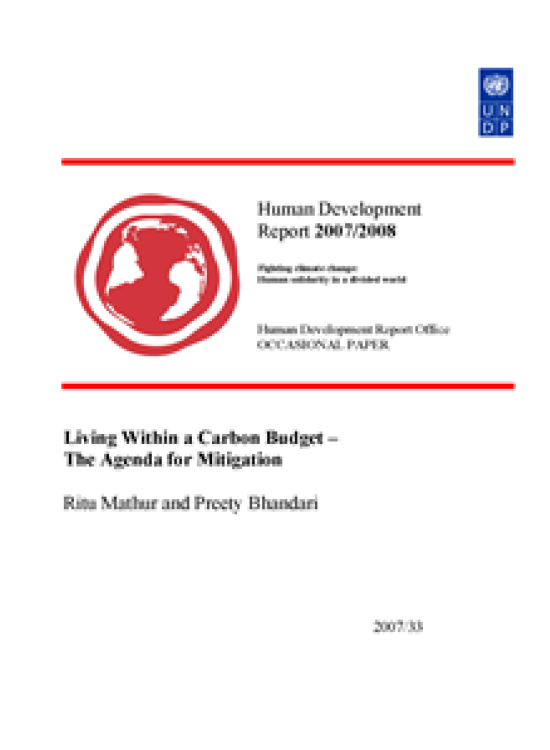Living Within a Carbon Budget – The Agenda for Mitigation

Download Report by Language
Document
mathurrituandbhandaripreety.pdf
(391.99 KB)
Citation
Mathur, Rita, Bhandari, Preety. 2008. Living Within a Carbon Budget – The Agenda for Mitigation. New York.
Living Within a Carbon Budget – The Agenda for Mitigation
Posted on: January 01, 2008
India is the world’s second most populous country with a population of around 1.1 billion. The energy-economy nexus in the Indian context has gained prominence in the global context in recent years both on account of the country’s forward looking developmental policies and its aspiration for high economic growth coupled with the rising concerns with regard to the environmental effects associated with energy use. Table 1 provides some key development indicators for India. India ranks fifth in the world in terms of primary energy consumption, accounting for about 3.5 per cent of the world’s commercial energy demand in the year 2003. Although the per capita energy consumption in India is still a fraction of that in developed countries, primary commercial energy demand grew at the rate of 6 per cent between 1981 and 2001 (Planning Commission 2002). Despite a gradual shift towards commercial energy fuels, a sizeable quantum of the country’s energy requirements, especially in the rural household sector, continues to be met by traditional energy forms like fuelwood, crop residue, and animal waste. However, the country’s pursuit of its developmental goals and its plans for maintaining high economic growth would inadvertently call for a rapid increase in commercial energy required to fuel the higher levels of economic activity as well as the rising energy aspirations concomitant with higher levels of urbanization and adoption of modern lifestyles.

